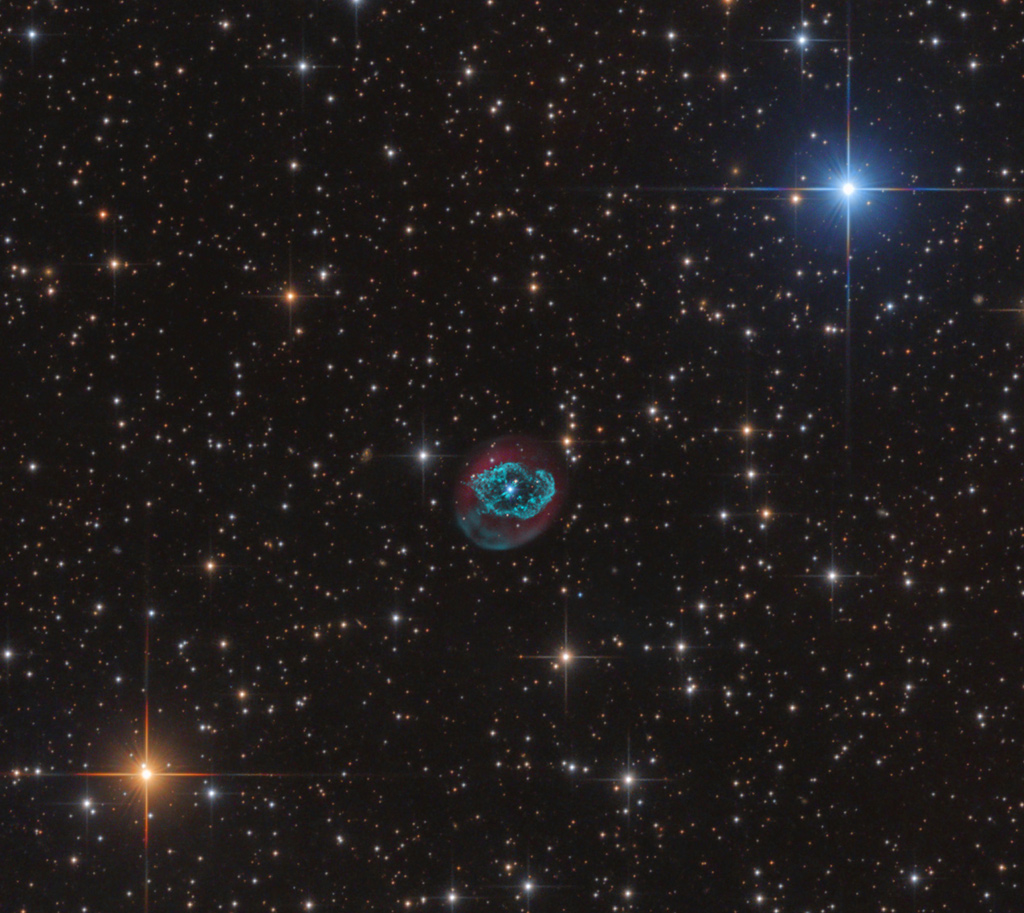行星状星云Abell 78
2020年10月16日
Planetary Nebula Abell 78
Image Credit & Copyright: Bernhard Hubl
Explanation: Planetary nebula Abell 78 stands out in this colorful telescopic skyscape. In fact the colors of the spiky Milky Way stars depend on their surface temperatures, both cooler (yellowish) and hotter (bluish) than the Sun. But Abell 78 shines by the characteristic emission of ionized atoms in the tenuous shroud of material shrugged off from an intensely hot central star. The atoms are ionized, their electrons stripped away, by the central star’s energetic but otherwise invisible ultraviolet light. The visible blue-green glow of loops and filaments in the nebula’s central region corresponds to emission from doubly ionized oxygen atoms, surrounded by strong red emission from ionized hydrogen. Some 5,000 light-years distant toward the constellation Cygnus, Abell 78 is about three light-years across. A planetary nebula like Abell 78 represents a very brief final phase in stellar evolution that our own Sun will experience … in about 5 billion years.
Tomorrow’s picture: light-weekend
行星状星云Abell 78
影像提供与版权: Bernhard Hubl
说明: 在这幅彩色望远镜影像里,行星状星云Abell 78是其中最突出的天体。其中,带星芒的银河恒星,其色泽和它们的表面温度相关,而不管是较温的泛黄恒星或较高温的泛蓝恒星,温度都比太阳高。 Abell 78的色泽源自极炽热中心星,所抛出的稀薄物质云内的电离原子发出之特征辐射。这些原子之所会电离失去外层电子,则是受中心星强烈但不可见的紫外光之照射。Abell 78中心区的环状和条状结构之蓝绿辉光,来自双电离的原子氧,而电离氢则发出外围的泛红辐射。宽约3光年的Abell 78,位在天鹅座方向约5,000光年远之处。像Abell 78这类的行星状星云,是类太阳恒星在短暂演化末期所产生的代表性天体,而我们的太阳再过约50亿年,也会演化到这种阶段。
明日的图片: light-weekend

